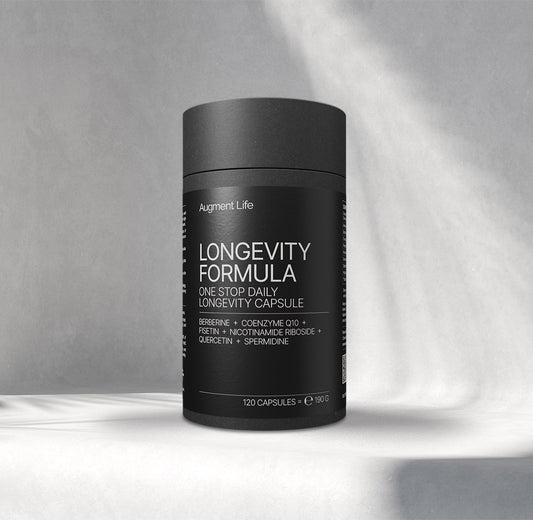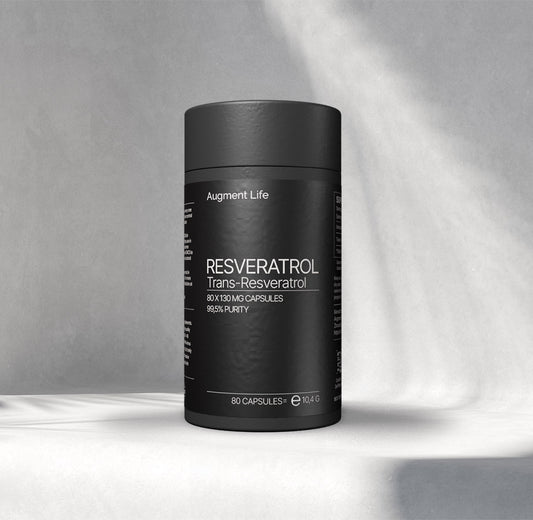Omega-3 fatty acids are a group of essential fats critical for maintaining normal cellular function and biological homeostasis. These essential fatty acids are not produced within the body and must be obtained through either diet or supplementation. Drawing substantial research and public interest, the potential health benefits of omega-3s have been well documented1. As a result, products containing omega-3s have become common in the marketplace. From omega-3 enriched eggs and milk to a myriad of supplemental options such as krill, fish, (EPA and DHA) and flaxseed oil (ALA), determining the best option can be a difficult task. In addition to this, research contradictions and quality control issues can further complicate matters. As touted by scientist, journalist, and salesman across the planet, claims regarding the potential benefits of omega-3s have spread far and wide. However, to address the validity of these claims we need to look at some of the most recent research on this controversial topic.
What are the Potential Benefits of Omega-3s?
One of the key potential benefits of omega-3 fatty acids relates to their anti-inflammatory properties. At the cellular level, omega-3s can be incorporated into the cell membrane which can directly impact inflammatory signaling processes2. Chronic inflammation has been linked to a wide variety of health conditions, including but not limited to arthritis, heart disease, diabetes, obesity, and cancer3. Beyond this role, a wide variety of beneficial effects of omega-3s have been proposed.
- Reduced triglycerides4
- Increased HDL5
- Cognitive decline and child neurodevelopment6
- Anxiety and depression7
- Eye health8
- And more
Does the Source of Omega-3s Matter?
As previously mentioned, omega-3 fatty acids come in several unique forms: EPA and DHA from marine sources like fish oil, and ALA from plant sources like flaxseed. Considering their limited availability in nature, incorporating EPA and DHA into the diet can be a difficult challenge for many. On the other hand, well-balanced diets often include sufficient ALA, from foods such as walnuts, flax seed, canola oil, chia seeds and even roast chicken. However, EPA and DHA are more bioavailable than plant-derived ALA, which the body converts less efficiently.
Farm Raised or Wild Caught?
In general, it is widely accepted that consuming seafood, particularly cold-water fatty fish like salmon, anchovies, and sardines, is the best way to incorporate EPA and DHA into the diet. Around the world, access to wild salmon and other fresh sources of omega-3s can vary greatly. Regions along the coast of Alaska and Canada offer the most abundant opportunities for harvesting wild salmon, accounting for the vast majority of what’s available in the marketplace. Considering the limited availability and questions regarding the sustainability of wild caught fish, many opt for farm-raised options. While both farmed and wild caught salmon can be good sources of omega-3s, neither are without their cons. Please see the following for some of the key differences between the two groups.
- Farmed raised contain higher levels of PCBs and carcinogens9, 10.
- Wild caught have lower levels of dioxins9, 10.
- Farm raised are treated with antibiotics11.
- Farm raised is higher in saturated fats10.
- Wild caught nutrient content may vary depending on region10.
- Wild caught can contain mercury in some cases10.
- Farm raised are higher in omega-6 fatty acids10.
One of the key differences between the two relates directly to the fat composition of the fish10. Wild salmon thrive on a diversified diet of crustaceans and sea creatures, while farmed salmon consume fishmeal pellets and other processed by-products. As a result, wild and farmed salmon have a widely different metabolic and physiological profile. Within farm raised salmon, we find a higher ratio of omega-6 to omega-3 fatty acids10. This could have big implications relating to the consumption of farm raised salmon as excessive levels of omega-6s have been linked to the development and progression of a wide variety of diseases12. Furthermore, the ratio of omega fatty acids can have a significant impact on the inflammatory response12. For instance, an increased ratio of omega-3s may help fight against inflammation while higher levels of omega-6s may promote it12, 13. While careful monitoring of omega fatty acid intake may be difficult for some, dietary incorporation of omega-3s could have substantial impacts on our overall health and well-being. Beyond consuming fish, fish oil supplements have proven to be a popular alternative for many individuals.
Fish Oil Supplements
Over the last several decades, research has shown that fish oil supplementation can have at least modest benefits, particularly relating to CVD14. Many of the clinical trials that have identified the beneficial effects of omega-3s have relied on fish oil supplementation. Numerous efficacy trials have found strong support for omega-3 fatty acid supplementation, showcasing the potential for fish oil supplementation to support cardiovascular health15, reduce inflammation16, and promote cognitive function17. However, the efficacy can vary depending on factors such as the source of omega-3s (fish oil, algae oil, etc.), dosage, and individual variations in metabolism. Bioavailability of omega-3s can be influenced by the formulation of supplements, with some sources exhibiting higher absorption rates. For example, one study showed higher rates of absorption for omega-3s in the form of emulsified fish oil when compared to encapsulated triglyceride fish oil18. While the potential for benefits clearly exists, it is important to understand that there are caveats and risks associated with omega-3 supplementation.
Can Omega-3 Supplementation have Side Effects?
Omega-3s have long been promoted for their benefits relating to heart disease19. However, some recent studies have found contradicting evidence against this claim. In 2021, a double-blind trial including over 13,000 high cardiovascular risk patients, investigated the impact of omega-3 supplementation on cardiovascular outcomes. In comparison to the placebo, the study found that high dose omega-3 supplementation did not result in a significant reduction in cardiovascular related events. In addition to this, studies have shown that omega-3s may increase the risk of prostate cancer through their involvement in prostate tumorigenesis20.
When taken in high doses, some may experience mild gastrointestinal discomfort, such as bloating, diarrhea, or indigestion. Additionally, omega-3s act as natural blood thinners, so excessive intake could lead to increased bleeding or bruising, particularly in adolescents21. While many studies support the use of omega-3 supplementation, it is important to consider the potential side effects and the source of the fatty acids. Finally, quality control issues relating to regulation, purification and contamination have been identified22.
What About Plant Sources?
Plant-based ALA has been shown to offer many of the same benefits as marine omega-3s. These benefits may include antioxidant activities, improved blood vessel function, and lower risk of CVD. Additionally, ALA may reduce the risk of neurodegeneration through supporting brain health and cognitive function23. Plant-based ALA sources also provide fiber, antioxidants, and other essential nutrients, making them an excellent component of any diet. However, while plant-based ALA serves as a precursor for EPA and DHA in the body, the conversion process is relatively inefficient. Only a small fraction of ALA gets converted into EPA and even less into DHA, which makes relying solely on plant-based sources for these essential omega-3 fatty acids a less effective strategy than intaking EPA and DHA directly. To ensure an adequate intake of EPA and DHA, incorporating direct sources through fish or algal oil supplementation may be important for individuals following a strict plant-based diet.
Final Takeaways
In conclusion, omega-3 fatty acids, whether sourced from marine (EPA and DHA) or plant (ALA) sources, can offer a wide variety of potential health benefits. The source of omega-3s matters as marine-derived EPA and DHA are more bioavailable compared to plant-based ALA. Consuming fish, particularly cold-water fatty fish, is a good way to obtain EPA and DHA, though concerns about sustainability and contamination exist. Marketplace availability and geographical location can also have a significant impact on consumer access to these powerful nutrients. Here in the United States, I have relatively open access to wild salmon, but the price is often double or even triple that of farmed. Providing a cheaper and more accessible alternative, fish oil supplementation may promote many of the same health-related benefits. However, the potential for side effects, questions concerning manufacturing practices and contradictory research warrant caution. On a personal note, I've taken fish oil supplements for an extended period without observing any discernible benefits. Plant-based ALA sources are widely available and may offer similar health benefits, but it may be important to keep in mind the ratio of omega-6s to omega-3s in the diet. In the end, a well-balanced diet that includes omega-3s from diversified sources may be the safest way to go.
References
- Yashodhara BM, Umakanth S, Pappachan JM, Bhat SK, Kamath R, Choo BH. Omega-3 fatty acids: a comprehensive review of their role in health and disease. Postgrad Med J 2009; 85: 84-90, doi:10.1136/pgmj.2008.073338.
- Calder PC. Omega-3 fatty acids and inflammatory processes. Nutrients 2010; 2: 355-374, doi:10.3390/nu2030355.
- Furman D, Campisi J, Verdin E, Carrera-Bastos P, Targ S, Franceschi C, et al. Chronic inflammation in the etiology of disease across the life span. Nat Med 2019; 25: 1822-1832, doi:10.1038/s41591-019-0675-0.
- Skulas-Ray AC, Wilson PWF, Harris WS, Brinton EA, Kris-Etherton PM, Richter CK, et al. Omega-3 Fatty Acids for the Management of Hypertriglyceridemia: A Science Advisory From the American Heart Association. Circulation 2019; 140: e673-e691, doi:10.1161/cir.0000000000000709.
- Bernstein AM, Ding EL, Willett WC, Rimm EB. A meta-analysis shows that docosahexaenoic acid from algal oil reduces serum triglycerides and increases HDL-cholesterol and LDL-cholesterol in persons without coronary heart disease. J Nutr 2012; 142: 99-104, doi:10.3945/jn.111.148973.
- Sass L, Bjarnadóttir E, Stokholm J, Chawes B, Vinding RK, Mora-Jensen AC, et al. Fish Oil Supplementation in Pregnancy and Neurodevelopment in Childhood-A Randomized Clinical Trial. Child Dev 2021; 92: 1624-1635, doi:10.1111/cdev.13541.
- Liao Y, Xie B, Zhang H, He Q, Guo L, Subramanieapillai M, et al. Efficacy of omega-3 PUFAs in depression: A meta-analysis. Transl Psychiatry 2019; 9: 190, doi:10.1038/s41398-019-0515-5.
- Calder PC. Docosahexaenoic Acid. Ann Nutr Metab 2016; 69 Suppl 1: 7-21, doi:10.1159/000448262.
- Easton MD, Luszniak D, Von der GE. Preliminary examination of contaminant loadings in farmed salmon, wild salmon and commercial salmon feed. Chemosphere 2002; 46: 1053-1074, doi:10.1016/s0045-6535(01)00136-9.
- Jensen IJ, Eilertsen KE, Otnæs CHA, Mæhre HK, Elvevoll EO. An Update on the Content of Fatty Acids, Dioxins, PCBs and Heavy Metals in Farmed, Escaped and Wild Atlantic Salmon (Salmo salar L.) in Norway. Foods 2020; 9, doi:10.3390/foods9121901.
- Lozano-Muñoz I, Wacyk J, Kretschmer C, Vásquez-Martínez Y, Martin MC. Antimicrobial resistance in Chilean marine-farmed salmon: Improving food safety through One Health. One Health 2021; 12: 100219, doi:10.1016/j.onehlt.2021.100219.
- Simopoulos AP. Evolutionary aspects of diet, the omega-6/omega-3 ratio and genetic variation: nutritional implications for chronic diseases. Biomedicine & Pharmacotherapy 2006; 60: 502-507, doi:https://doi.org/10.1016/j.biopha.2006.07.080.
- Innes JK, Calder PC. Omega-6 fatty acids and inflammation. Prostaglandins Leukot Essent Fatty Acids 2018; 132: 41-48, doi:10.1016/j.plefa.2018.03.004.
- Campbell F, Dickinson HO, Critchley JA, Ford GA, Bradburn M. A systematic review of fish-oil supplements for the prevention and treatment of hypertension. Eur J Prev Cardiol 2013; 20: 107-120, doi:10.1177/2047487312437056.
- O'Keefe EL, Harris WS, DiNicolantonio JJ, Elagizi A, Milani RV, Lavie CJ, et al. Sea Change for Marine Omega-3s: Randomized Trials Show Fish Oil Reduces Cardiovascular Events. Mayo Clinic Proceedings 2019; 94: 2524-2533, doi:https://doi.org/10.1016/j.mayocp.2019.04.027.
- Kavyani Z, Musazadeh V, Fathi S, Hossein Faghfouri A, Dehghan P, Sarmadi B. Efficacy of the omega-3 fatty acids supplementation on inflammatory biomarkers: An umbrella meta-analysis. International Immunopharmacology 2022; 111: 109104, doi:https://doi.org/10.1016/j.intimp.2022.109104.
- Dighriri IM, Alsubaie AM, Hakami FM, Hamithi DM, Alshekh MM, Khobrani FA, et al. Effects of Omega-3 Polyunsaturated Fatty Acids on Brain Functions: A Systematic Review. Cureus 2022; 14: e30091, doi:10.7759/cureus.30091.
- Raatz SK, Redmon JB, Wimmergren N, Donadio JV, Bibus DM. Enhanced absorption of n-3 fatty acids from emulsified compared with encapsulated fish oil. J Am Diet Assoc 2009; 109: 1076-1081, doi:10.1016/j.jada.2009.03.006.
- Jain AP, Aggarwal KK, Zhang PY. Omega-3 fatty acids and cardiovascular disease. Eur Rev Med Pharmacol Sci 2015; 19: 441-445.
- Brasky TM, Darke AK, Song X, Tangen CM, Goodman PJ, Thompson IM, et al. Plasma phospholipid fatty acids and prostate cancer risk in the SELECT trial. J Natl Cancer Inst 2013; 105: 1132-1141, doi:10.1093/jnci/djt174.
- Clarke JTR, Cullen-Dean G, Regelink E, Chan L, Rose V. Increased incidence of epistaxis in adolescents with familial hypercholesterolemia treated with fish oil. The Journal of Pediatrics 1990; 116: 139-141, doi:https://doi.org/10.1016/S0022-3476(05)81666-X.
- Nevigato T, Masci M, Caproni R. Quality of Fish-Oil-Based Dietary Supplements Available on the Italian Market: A Preliminary Study. Molecules 2021; 26: 5015, https://www.mdpi.com/1420-3049/26/16/5015.
- Leikin-Frenkel A, Schnaider Beeri M, Cooper I. How Alpha Linolenic Acid May Sustain Blood-Brain Barrier Integrity and Boost Brain Resilience against Alzheimer's Disease. Nutrients 2022; 14, doi:10.3390/nu14235091.











